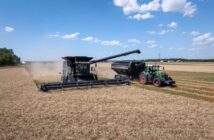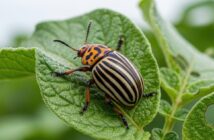Unexpected levels of septoria tritici infection reported on the winter wheat variety Cougar in 2015 appear to have been limited to that specific variety.
The conclusion is based on AHDB-funded research that conducted genetic and phenotypic analyses on septoria tritici isolates collected from the field in 2015.
Tests on a range of Recommended List (RL) varieties, at both the seedling and adult stage, found that these isolates could only overcome the resistance mechanisms in Cougar itself.
Catherine Garman, who manages disease research at AHDB, said: “Because the ‘Cougar’ isolates did not overcome resistance in other varieties, it appears to have been a one-off incident. It means growers continue to have very good varieties available to help them manage this disease.”
The latest edition of the RL includes varieties with excellent levels of resistance to septoria tritici, such as KWS Extase and LG Sundance, which have disease ratings of 8.1 and 7.9, respectively (where 1 = susceptible and 9 = resistant).
Fungicide sensitivity screens on the isolates, conducted as part of the research, also found no unexpected mutations.
The research was delivered by the team behind the UK Cereal Pathogen Virulence Survey (UKCPVS). Managed by NIAB, and funded by AHDB and Defra, UKCPVS analyses leaf samples infected with cereal rusts and mildews. From these samples, pathogen isolates are selected and tested to check their virulence against wheat and barley varieties. The testing can detect new races of cereal pathogens capable of causing disease on previously resistant cereal varieties.
Further information about UKCPVS, including how to send in a sample, can be found at ahdb.org.uk/ukcpvs




